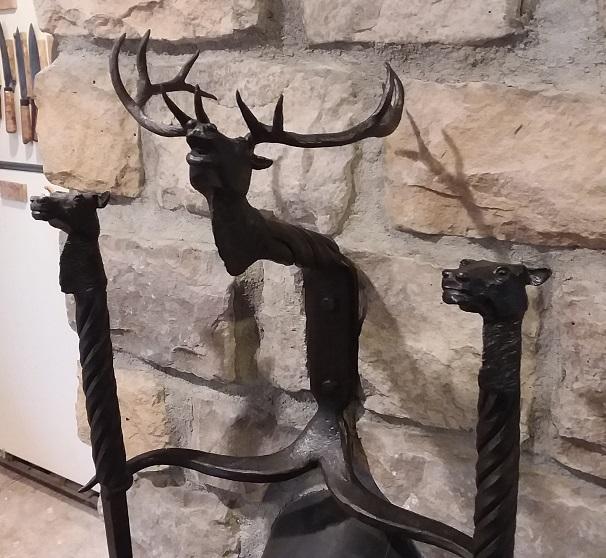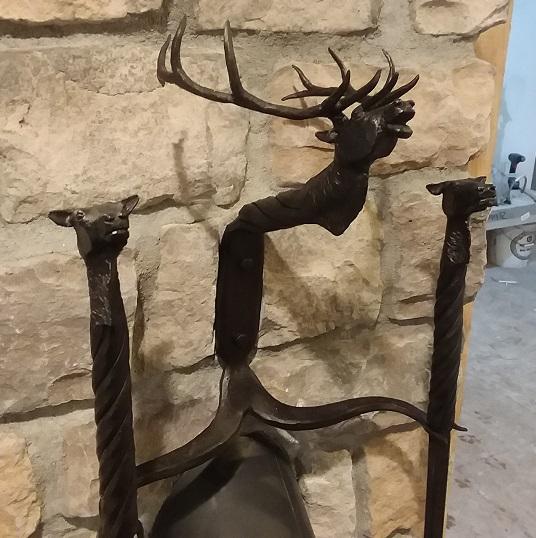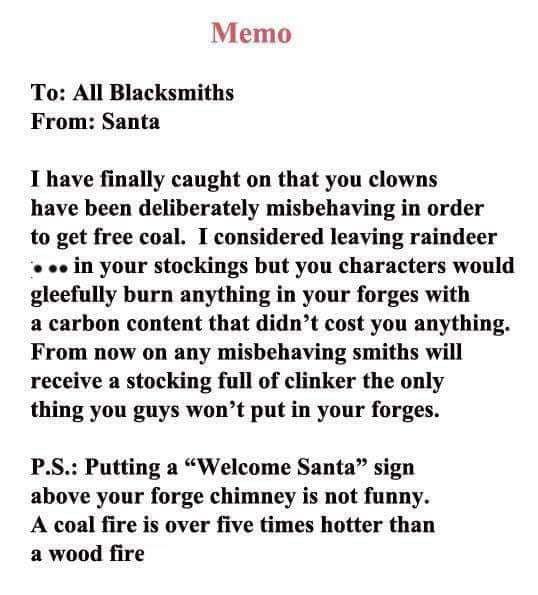
billyO
-
Posts
549 -
Joined
-
Last visited
Content Type
Profiles
Forums
Articles
Gallery
Downloads
Events
Posts posted by billyO
-
-
10 hours ago, jeremy k said:
I saw a forge welding demo where an onlooker threw a penny in the forge to mess with the demonstrator, the demonstrator was peaved but continued his demo and on first try successfully forge welded a bunch of electrician's pliers, wire strippers together to make a knife for a retired electrician. I know this because the demo was in my brick forge at a hammer-in I hosted. The demonstrator who did the forge welding said it's not the penny that causes problems, it's the fire management for forge welding that counts for a successful weld. I saw, so therefore I believe.
I wonder if it depends on what year of penny is thrown in. IIRC, pennies were 95% copper until 1984 when they changed to 2% copper.
-
I'm not 100% sure, but I think the issue is the copper. I spilled some in my forge a couple of years ago and had difficulty welding up damascus billets until I re-cast the floor of the forge.
-
That is a pretty knife!
-
Sweet bird, Das!
-
Nice ram's head, John. It looks comfortable in the hand. It actually looks more comfortable than the ram's head I forged for my Dodge's stick shift.
-
4 hours ago, aaamax said:
Crispy edges I know are frowned upon, but they sure do give one fantastic necking-down abilities.
You can get just as nice nicks with a very small radius. Depending on the size of stock you're typically using, I'd round off the edges in a taper from ~m 0.5cm radius at the horn edge down to close to square at the heel, but without any sharp corners. You can put the almost square portion somewhere between the feet of the anvil for the most stability if needed. But again, depending on the size of stock you're using a 107kg anvil will be a huge increase in stability over your 85kg.
If you really need/want a sharp corner for any reason, you can fix that with a square chisel.
as always
peace and love
billyO
-
Hello all. I can't take credit for these, they came out of Darryl Nelson's forge a number of years ago, but I just got these re-installed in my new stone chimney and thought they could be used as inspiration to someone someday.


as always
peace and love
billyO
-
Looks good, PVF. Did you use a swedge block for final shaping?
-
14 hours ago, sharxbyte said:
I COULD keep working it and see if it breaks during use, or I could make it ornamental, or I can set it aside as a lesson learned.
If you're looking for opinions, I'd keep working on it for practice in grinding, putting on the WA handle and then using it to test your heat treating.
I've got a little blade that I did my first twist pattern on and didn't do a good enough job keeping the twists from giving me cold shuts. It sat on my desk for a couple of years. I decided to use it to practice my sheath making and started using it hard this past summer during my remodel, cutting everything from insulation to sheetrock, and aside from the cold shut in the blade, it's turned out to be what I consider the perfect knife for this job, and it's become my EDC knife.
as always
peace and love
billyO
-
I use a piece of 3" dia black ABS with a threaded top that I also use to dunk my blades in. So far 3+ years without any leaking.
Also, you should be able to buy ferric chloride to avoid having to do the work changing it yourself. I got mine from Radio Shack when they still had box stores, and it's sold as PCB etchant.
-
On 10/1/2018 at 11:20 AM, VainEnd84 said:
That better be a beautiful cake otherwise that knife is going to put it to shame! Beautiful work man
My thoughts exactly. Great looking knife.
I've been wanting to do an integral bolster for a while now. I just seem to forget that while forging.
Keep up the good work
as always
peace and love
billyO
-
As mentioned above, practice is the key.
Also, this question may be more appropriate in the Bladesmithing section of this forum.
If possible, join your local blacksmithing organization, although it's probably the NWBA and those events can be tough to get to for a 14 y/o.
Most importantly, have fun and don't get discouraged. If you keep at it, you'll be way ahead of me before you get to get to 1/2 my age.
as always
peace and love
billyO
-
11 hours ago, BIGGUNDOCTOR said:
I was thinking that a lag screw could be used as a mandrel of sorts to keep the coils equidistant to each other.
Hmmmm....that's an idea worth pursuing
-
One suggestion/modification I'd make, though is, when you are separating the coils after turning/twisting them, don't just pull the end out like I've seen before and it looks like you did. You need to use a screwdriver or something like that to separate the twists so that you have even spacing all around the corkscrew so that it follows the same hole. By having larger spacing at the end than at the top, you will tear up the cork.
I can't take credit for coming up with that though, I learned it from Mark Aspery at one of our weekend functions when he demonstrated "Forging a helical actuator for removing semi-permanent check valves in an enclosed fluidine system"
as always
peace and love
billyO
-
Nobody else mentioned this, and it may be a moot point, but it's my understanding that the RR owns everything within a certain distance around the tracks. I'd be surprised if anyone hassled you about that though, and if they did, I bet you could hand it back with a sneer and say something like, "Fine, you can have this piece of junk back" then and they'd let you go.
as always
peace and love
billyO
-
Sweet looking knife
-
Thanks sfeile!
-
On 7/10/2017 at 7:08 PM, Glenn said:
Ask one question and get answers from blacksmiths from all over the world to start throwing ideas into the mix. Then it starts to reverberate with ideas creating more ideas, etc.
This is IForgeIron at it's best.
To quote my quote I submitted in the thread about quotes:
Ask 10 blacksmiths how to do something and you'll get 12 different answers.
-
Thanks John.
-
7 hours ago, Strike said:
Mouth blowing like crazy I achieved a medium red incandescence.
Holy cow! You must be a runner to have enough lung capacity for this. I'd like to see someone do this some day? What was the diameter of your pipe?
-
Thanks all. A hunter/utility/EDC is what most folks have recommended.
Are there any good references you could point me to discussing different profiles for different uses?
-
-
Hey John. Do you get yours at Clay Arts or is there a place in Oly to get them?
Hope to see you at Swaptoberfest (I should have some stabilized spalted maple burl for sale there....)
-
Nice looking knife, but I really like the 1/2 elk skull on the sheath. I need to get away from my go to sheath style and start learning how to carve leather. You may have just motivated me.


Memo from Santa
in Everything Else
Posted
Saw this on another forum: